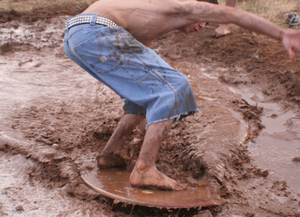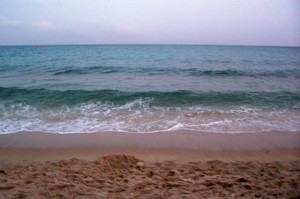Students often lack enthusiasm for their courses, particularly if those courses are requirements rather than electives. A good teacher may be one counter to a lackadaisical attitude, but effective instructional tools are another, among them, textbooks. À Bord (“on board”), written by Conrad J. Schmitt and Katia Brillé Lutz, and published by Glencoe McGraw Hill, is designed for intermediate students of French, those most likely sophomores or juniors in high school.
Textbooks bulging with interminable streams of verbiage broken only by the infrequent chapter pause, grammatical diagram or uninspiring black and white photo seldom foster interest in a subject. À Bord contains many lively photographs relating to specific topics, and illustrations which convey more meaning and dimension to new words than monotonous explanations ever could. Some of the illustrations have a comic strip quality, which students may find patronizing, but this is preferable to boring the readers.
The instructive process is cumulative, with new vocabulary and concepts reappearing in the chapter reviews, and periodically throughout the book. À Bord’s 16 chapters present practical information that lays the foundation for ascending to any topic. The Rèvision sections, which appear after every fourth chapter, reiterate the preceding four. Since À Bord is intended for high school students, many of the practice exercises and activities in each chapter require one or more partners, which puts the independent learner who wants to brush up on his French at a disadvantage. The practice exercises that require responding to different questions or inserting the proper conjugation or tense of different verbs make sense, but there is one reappearing exercise that lists questions and simply states “Rèpondez par ‘oui.'” (Respond with “yes.”) This does little to help one’s language skills.
New vocabulary is first presented in context, then further clarified by its inclusion in practice exercises or pairing with corresponding illustrations. By the time students come to the end of the chapter where all of the new vocabulary is listed in both French and English, they probably already know what the new words mean. À Bord does not make much use of cognates, words that are the same or nearly the same in two different languages. French is rife with examples: chat (cat); littérature, vocabulaire, collège, stricte, activité, etcetera. Also, with one or two exceptions, À Bord spends virtually no time on proper pronunciation. This too puts the independent student at a disadvantage. In class, both fellow students and the teacher can correct faulty pronunciation, but someone who buys this book for home study will not know until he gets to France if he is pronouncing certain words incorrectly.
À Bord offers concise, cogent explanations of the conjugation and tenses of different verbs, but only the most commonly-used ones -present, imperative, passé composé, imperfect, future, conditional, present subjunctive and past subjunctive. While in France, one might have the occasion to use the past perfect: J’ai eu voulu aller à cet restaurant jusqu’à j’ai entendu que la cuisine et le service etaient terribles. (I had wanted to go to that restaurant until I heard that the food and the service were terrible). The appendices contain these eight different tenses for regular and many irregular verbs, as well as a French-English and English-French dictionary, grammatical section, and maps of France, Paris, and the French-speaking world.
The cultural lessons in À Bord are useful for those desiring to travel to France, but incomplete. Travelers need to understand different customs, manners and methods, particularly in an era when Americans are unfortunately subjected to more scrutiny and distrust. Snapping one’s fingers in a French restaurant and calling “garcon” will probably elicit an icy stare. (Protocol dictates saying “S’il vous plait.”) À Bord is basically a good book, but was published in 1998, and probably calls for a second edition soon.





